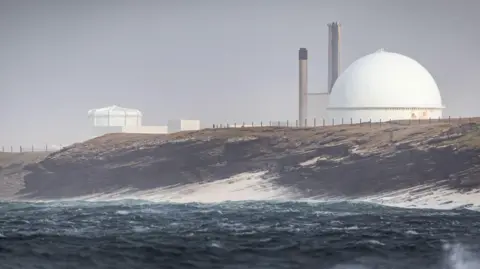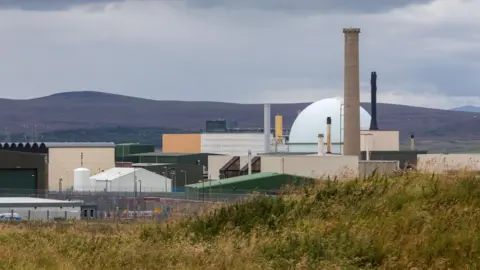Steven McKenzieHighlands and Islands reporter
 Getty Images
Getty ImagesA fragment of waste found near Dounreay in April was the most radioactive to be detected in the last three years, the Highland nuclear site’s operator has said.
Sand-sized particles of irradiated nuclear fuel got into Dounreay’s drainage system in the 1960s and 1970s.
Work to clean up the pollution began in the 1980s, after particles were found washed up on the nearby foreshore.
April’s fragment has been categorised as “significant” and was discovered during monitoring work around the nuclear power plant, near Thurso.
A Dounreay spokesperson said: “Particles are a legacy of industrial practices dating back to the early 1960s and our commitment today to environmental protection includes their monitoring and removal from the marine environment and transparent reporting of our activities.”
A group of independent experts, who advise the Scottish Environment Protection Agency (Sepa) and Dounreay, classify particles by the radioactivity of their caesium-137 content.
The categories are minor, relevant and significant.
Significant means a reading greater than one million becquerels of CS-137.
A becquerel is defined as a small unit of radioactivity.
 Getty Images
Getty ImagesThe particle was found on the western part of Dounreay’s foreshore on 7 April.
A significant-category particle was last discovered in March 2022.
Thousands of particles of different categories have been removed from beaches, foreshore and seabed at Dounreay.
The site’s operator said monitoring continued to be done on a fortnightly basis.
On occasions it said the scheduled work could be interrupted by bad weather or the presence of protected species of ground-nesting birds.
Dounreay, on the north Caithness coast, was established 70 years ago as an experimental nuclear power site.
The facility is in the process of being closed down, demolished and cleaned up.
Disclaimer : This story is auto aggregated by a computer programme and has not been created or edited by DOWNTHENEWS. Publisher: BBC







